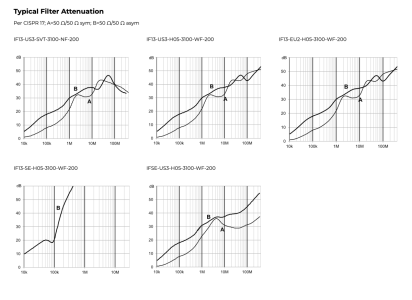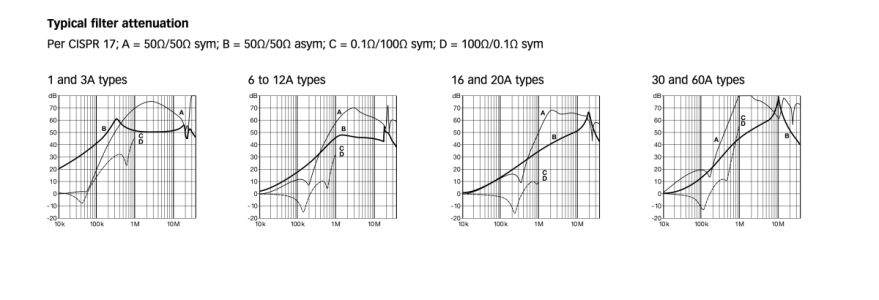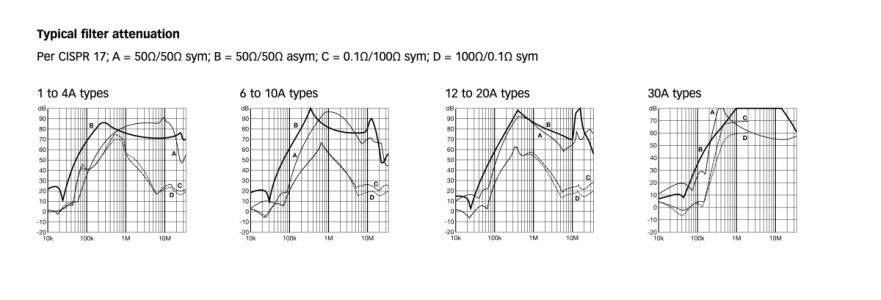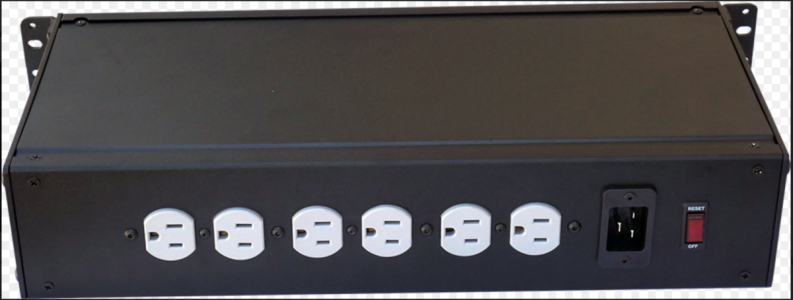Hello all,
As the title may suggests this is my review of OnFilter’s PDU (Power Distribution Unit) which is power conditioner (EMI + RFI Filtering) plus power strip. I very well know this might be a controversial topic, but I will still go ahead. As a disclaimer, I am not affiliated with OnFilter nor have I received discount on my PDU (yes, I have paid the full price) or I haven’t received any review unit. As the brand is not known in the Audiophile world, I am going to deviate from my usual style of writing the review.
So, I will begin with little about company & the brain behind the product. OnFilter is a US based company specializing in EMI & EMC related products which are geared for research institutes, Semiconductor Manufacturing, Telecom, Datacenters, Medical industry etc. As per it’s founder, owner Vladimir Kraz the use of its products in Audio is just a co-incidence & he never really designed any product with audio in mind. For use in Audio, he has two products AC Emi filter (with two outlets/sockets of your choice) & PDU which is essentially the same product as AC EMI filter with 8 outlets/sockets.
Vladimir has a solid credentials when it comes to EMI & EMC industry with over 40 years of experience in EMI, ESD & EMC industry & has been part of committee deciding EMC standards for Semiconductor manufacturing (along with being Director of Instrumentation at 3M). He has at least two dozen patents (either solo or co-authored) in the same field. In short, he is extremely knowledgeable and knows exactly what he is doing.
When I was searching for a power conditioner, I was looking for couple of things like the product, designer & reputation. While all Audiophile companies manufacturing the power conditioners have good reputation, but it’s limited audiophile world only. You won’t find any audiophile brand being used in a very strict & demanding application. Here only OnFilter had that reputation (but not known in the Audiophile world).
Secondly the designer’s background. Though this was the least important criteria but still it tells one about what to expect from the products. Obviously here Vladimir was ahead of the competition because of his such an extensive background in the relevant field. Besides he has patents which are not laughable like some of the other company’s designers have. Pure science & engineering.
Lastly & the most important; product & it’s performance. While all the products from audiophile companies are extremely well built (maybe even better build than OnFilter), but when it comes to its performance, they keep it either completely subjective or specify very little. Now, having studied science, electronics & electricity all throughout my academics, even in my masters; I know very well that power is the only part of the system which can be gauged completely objectively. So, finding all the audiophile companies either skip on the actual performance data was a shock to me when the cost of the piece can go as high as $26K.
I even contacted couple of manufacturers (Shunyata & IsoTek) to know about their performance specs, but to my surprise the reply that I got from them was they do not measure the performance of their product & they don’t believe in it. Instead, they prefer in hearing the improvement & go by telling the customer that their product is good because it was used in some albums re-mastering. Having heard these replies left me absolutely speechless & for a moment if all my learning was wrong. Afterall these most of these products (power conditioners) do nothing but EMI filtering. So, for a conditioner the most relevant performance spec is attenuation of noise over range of frequencies in lab environment (using 50 ohms resistance symmetric case of 50:50) & in real-life load resistances (1:100 or 100:1 case) specified as a chart for Common Mode & Differential mode. That’s it, no other performance spec is necessary for EMI reduction. Other things about product like its output resistance change as per the load, power factor correction (if applicable) etc. make the product description complete. So that when one sees them, they know exactly what to expect from that product 9at-least that’s how it works in engineering world).
I have gone through specification & user manuals/product sheets of all major brands & have compiled a table below. Here in the performance attenuation, Mode & specified load is important. The classic case being regular consumer filers from Schaffner. Looking at the table, Schaffner would look like the best bang for buck filter. But the numbers are deceptively specified for lab conditions & they have removed the real-life load performance data from their datasheet which shows amplification of the noise in the 100KHz region where some of the EMI source operate (like SMPS of LED lighting).
If one has patience to read about this issue with performance variation as per the load, then go through this magazine’s (EMC/EMI product’s magazine) page no. 34 where another person is explaining the same issue.
https://interferencetechnology.com/wp-content/uploads/2017/05/2017-IT_EMC_Filters_Guide_Low-Res.pdf
Besides all of this, even if the product is very well speced, there is no guarantee that it will improve sound for following reasons.
1. EMI/Filteration Performance :- This is obvious factor which doesn't need any explanation.
2. EMI/RFI on power line :- Now we don't really measure how much polluted our lines are before we even use an power conditioning. So if a line is very clean then even if best power conditioner is used it will not really have any impact on SQ.
3. Power Design of the component :- Some companies recommend plugging directly into the wall outlet. In those case & other cases here power stage is very well designed and takes care of dirty power is naturally going to sound same as with any power conditioner.
4. Personal bias and hearing ability :- Everyone has different hearing ability and not everyone can distinguish the changes which are subtle. Besides bias is very true and it can change one's perception to a large amount the way he perceives changes in SQ.
So if you consider all this you will understand why it's not a great idea to find correlation between SQ and EMI reduction.
Now enough of the background and theory & coming to the review of the product in hand. Build quality of the PDU is also first rate. Very sturdy & industrial design. Bonus part is it has a display which shows incoming voltage value, total Current Drawn, Power consumption & total power/energy consumed since last reset. This feature is not found in any of the audiophile power conditioners (not sure of PS Audio). It tells you how much energy your entire audio setup (which is connected to PDU) is consuming. Very nice feature to know the power bills.
Now coming to the crux, how does it sound. It took me just 5 mins of playback to realize that this is an amazing product. It has significantly improved the SQ of my system. All the regular superlatives apply in my case to the improvement like bass has become tighter, details have increased, micro-transients have improved, sense of black background is even more, music sounds more organic, notes decay for longer etc. etc. The list goes on and on. I am enjoying music even more now.
So does all this mean this is the perfect power conditioner? The answer is no. Here are some of the limitations of this PDU. First and the biggest one. This PDU has IEC C14 Female sockets for its output (the one commonly found in computers or data centers), so that means you cannot directly plug your fat audiophile power cord into this. You will need IEC C14 Male to US/Shuko plug adapter to use your power cords. But as Vladimir never had Audiophile market in his mind while designing his products this is understandable. Second is, while it’s excellent at blocking the EMI/RFI coming from all the places (conducted EMI), if you connect any noisy equipment to the same PDU that has your audio equipment attached to, then the EMI from noisy equipment will be transmitted to other equipment. While none of the audio components are that noisy, it’s not a deal breaker.
Besides that, I have given Vladimir feedback regarding these two points, and he has said that he will definitely look into it, especially the part related to the sockets, so that’s promising.
In the end I will just say that this is a fantastic piece of equipment that all audiophiles should have instead of no specs, all marketing audiophile products. Kudos to Vladimir for making such fantastic piece of equipment at sane price.
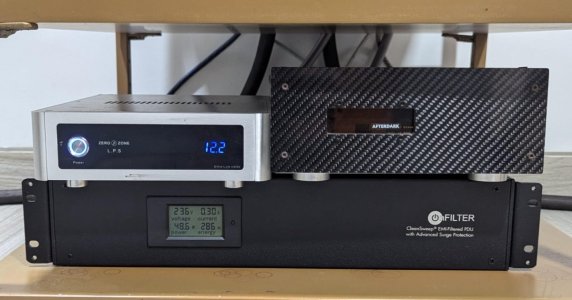
Regards,
Audio_phool
As the title may suggests this is my review of OnFilter’s PDU (Power Distribution Unit) which is power conditioner (EMI + RFI Filtering) plus power strip. I very well know this might be a controversial topic, but I will still go ahead. As a disclaimer, I am not affiliated with OnFilter nor have I received discount on my PDU (yes, I have paid the full price) or I haven’t received any review unit. As the brand is not known in the Audiophile world, I am going to deviate from my usual style of writing the review.
So, I will begin with little about company & the brain behind the product. OnFilter is a US based company specializing in EMI & EMC related products which are geared for research institutes, Semiconductor Manufacturing, Telecom, Datacenters, Medical industry etc. As per it’s founder, owner Vladimir Kraz the use of its products in Audio is just a co-incidence & he never really designed any product with audio in mind. For use in Audio, he has two products AC Emi filter (with two outlets/sockets of your choice) & PDU which is essentially the same product as AC EMI filter with 8 outlets/sockets.
Vladimir has a solid credentials when it comes to EMI & EMC industry with over 40 years of experience in EMI, ESD & EMC industry & has been part of committee deciding EMC standards for Semiconductor manufacturing (along with being Director of Instrumentation at 3M). He has at least two dozen patents (either solo or co-authored) in the same field. In short, he is extremely knowledgeable and knows exactly what he is doing.
When I was searching for a power conditioner, I was looking for couple of things like the product, designer & reputation. While all Audiophile companies manufacturing the power conditioners have good reputation, but it’s limited audiophile world only. You won’t find any audiophile brand being used in a very strict & demanding application. Here only OnFilter had that reputation (but not known in the Audiophile world).
Secondly the designer’s background. Though this was the least important criteria but still it tells one about what to expect from the products. Obviously here Vladimir was ahead of the competition because of his such an extensive background in the relevant field. Besides he has patents which are not laughable like some of the other company’s designers have. Pure science & engineering.
Lastly & the most important; product & it’s performance. While all the products from audiophile companies are extremely well built (maybe even better build than OnFilter), but when it comes to its performance, they keep it either completely subjective or specify very little. Now, having studied science, electronics & electricity all throughout my academics, even in my masters; I know very well that power is the only part of the system which can be gauged completely objectively. So, finding all the audiophile companies either skip on the actual performance data was a shock to me when the cost of the piece can go as high as $26K.
I even contacted couple of manufacturers (Shunyata & IsoTek) to know about their performance specs, but to my surprise the reply that I got from them was they do not measure the performance of their product & they don’t believe in it. Instead, they prefer in hearing the improvement & go by telling the customer that their product is good because it was used in some albums re-mastering. Having heard these replies left me absolutely speechless & for a moment if all my learning was wrong. Afterall these most of these products (power conditioners) do nothing but EMI filtering. So, for a conditioner the most relevant performance spec is attenuation of noise over range of frequencies in lab environment (using 50 ohms resistance symmetric case of 50:50) & in real-life load resistances (1:100 or 100:1 case) specified as a chart for Common Mode & Differential mode. That’s it, no other performance spec is necessary for EMI reduction. Other things about product like its output resistance change as per the load, power factor correction (if applicable) etc. make the product description complete. So that when one sees them, they know exactly what to expect from that product 9at-least that’s how it works in engineering world).
I have gone through specification & user manuals/product sheets of all major brands & have compiled a table below. Here in the performance attenuation, Mode & specified load is important. The classic case being regular consumer filers from Schaffner. Looking at the table, Schaffner would look like the best bang for buck filter. But the numbers are deceptively specified for lab conditions & they have removed the real-life load performance data from their datasheet which shows amplification of the noise in the 100KHz region where some of the EMI source operate (like SMPS of LED lighting).
| Sr. No. | Manufacturer | Model | EMI/Noise Reduction | Frequency Range Specified | Mode Specified | Load Specified | Cost |
| 1 | Shunyata | Everest | More than 50dB, 68db @ 1 Mhz | 100 KHz to 30 Mhz | No | No | USD 9,900 |
| 2 | Shunyata | Gemini | More than 40dB, 28dB @ 1 Mhz | 100 KHz to 30 Mhz | No | No | USD 1,998 |
| 3 | Shunyata | Venom PS10 | More than 24dB, 28dB @ 1 Mhz | 100 KHz to 30 Mhz | No | No | USD 900 |
| 4 | Audioquest | Niagra 5000 | More than 30db for CM & more than 28 dB for DM | 3 Khz to 1 Ghz for DM & 60 Hz to 100Mhz for CM | Yes, CM & DM | 10 to 50 ohms | USD 5,900 |
| 5 | Audioquest | Niagra 7000 | More than 30db for CM & more than 28 dB for DM | 3 Khz to 1 Ghz for DM & 60 Hz to 100Mhz for CM | Yes, CM & DM | 10 to 50 ohms | USD 11,000 |
| 6 | Audioquest | PowerQuest 303 | More than 22 dB for DM | 3 Khz to 1 Ghz for DM | Yes, DM | 10 to 50 ohms | USD 460 |
| 7 | Synergistic Research | Galileo PowerCell SX | Not Specified | No | No | No | USD 27,995 |
| 8 | Synergistic Research | PowerCell SX | Not Specified | No | No | No | USD 9,000 |
| 9 | Synergistic Research | PowerCell ONE | Not Specified | No | No | No | USD 1,095 |
| 10 | PS Audio | Power Plant 20 | More than 80 dB | 100 KHz to 2 MHz | No | No | USD 8,000 |
| 11 | PS Audio | Power Plant 15 | More than 80 dB | 100 KHz to 2 MHz | No | No | USD 6,399 |
| 12 | PS Audio | Stellar Power Plant 3 | Not Specified | No | No | No | USD 2,399 |
| 13 | IsoTek | EVO3 Super Titan | 85dB | No | No | No | USD 12,495 |
| 14 | IsoTek | V5 Titan | 85dB | No | No | 50 ohms | USD 4,995 |
| 15 | IsoTek | V5 Elektra | 55dB | No | No | No | USD 1,695 |
| 16 | Puritan Audio | PSM 156 | Not Specified | No | No | No | USD 2,400 |
| 17 | Puritan Audio | PSM 136 | Not Specified | No | No | No | USD 2,100 |
| 18 | OnFilter | AF Series | Graph Provided for CM & DM. Max 98dB in DM, Max 62db in CM | 10 KHz to 50 MHz | Yes, CM & DM | 1:100 | USD 650 |
| 19 | Schaffner | FN 2090 20A | Graph Provided for CM & DM. Max 100dB in DM, Max 82db in CM | 10 KHz to 100 MHz | Yes, CM & DM | 50:50 | USD 70 |
| 20 | Furman | Prestige Series P-2400 AR Power Conditioner | 10dB @ 10KHz, 40dB @ 100KHz, 50dB @ 500KHz | 10 KHz to 500 KHz | No | No | USD 1,350 |
| 21 | Furman | Prestige Series P-2400 IT Power Conditioner | 10dB @ 10KHz, 40dB @ 100KHz, 50dB @ 500KHz in DM, 80dB @ 20KHz, 40dB @ 20KHz to 1 MHz in CM | 10 KHz to 1 MHz | Yes, CM & DM | No | USD 2,100 |
| 22 | Transparent Audio | OPUS PowerIsolator | Not Specified | No | No | No | USD 17,000 |
| 23 | Transparent Audio | REFERENCE PowerIsolator | Not Specified | No | No | No | USD 7,600 |
| 24 | Transparent Audio | PowerBank 6 Power Conditioner | Not Specified | No | No | No | USD 995 |
If one has patience to read about this issue with performance variation as per the load, then go through this magazine’s (EMC/EMI product’s magazine) page no. 34 where another person is explaining the same issue.
https://interferencetechnology.com/wp-content/uploads/2017/05/2017-IT_EMC_Filters_Guide_Low-Res.pdf
Besides all of this, even if the product is very well speced, there is no guarantee that it will improve sound for following reasons.
1. EMI/Filteration Performance :- This is obvious factor which doesn't need any explanation.
2. EMI/RFI on power line :- Now we don't really measure how much polluted our lines are before we even use an power conditioning. So if a line is very clean then even if best power conditioner is used it will not really have any impact on SQ.
3. Power Design of the component :- Some companies recommend plugging directly into the wall outlet. In those case & other cases here power stage is very well designed and takes care of dirty power is naturally going to sound same as with any power conditioner.
4. Personal bias and hearing ability :- Everyone has different hearing ability and not everyone can distinguish the changes which are subtle. Besides bias is very true and it can change one's perception to a large amount the way he perceives changes in SQ.
So if you consider all this you will understand why it's not a great idea to find correlation between SQ and EMI reduction.
Now enough of the background and theory & coming to the review of the product in hand. Build quality of the PDU is also first rate. Very sturdy & industrial design. Bonus part is it has a display which shows incoming voltage value, total Current Drawn, Power consumption & total power/energy consumed since last reset. This feature is not found in any of the audiophile power conditioners (not sure of PS Audio). It tells you how much energy your entire audio setup (which is connected to PDU) is consuming. Very nice feature to know the power bills.
Now coming to the crux, how does it sound. It took me just 5 mins of playback to realize that this is an amazing product. It has significantly improved the SQ of my system. All the regular superlatives apply in my case to the improvement like bass has become tighter, details have increased, micro-transients have improved, sense of black background is even more, music sounds more organic, notes decay for longer etc. etc. The list goes on and on. I am enjoying music even more now.
So does all this mean this is the perfect power conditioner? The answer is no. Here are some of the limitations of this PDU. First and the biggest one. This PDU has IEC C14 Female sockets for its output (the one commonly found in computers or data centers), so that means you cannot directly plug your fat audiophile power cord into this. You will need IEC C14 Male to US/Shuko plug adapter to use your power cords. But as Vladimir never had Audiophile market in his mind while designing his products this is understandable. Second is, while it’s excellent at blocking the EMI/RFI coming from all the places (conducted EMI), if you connect any noisy equipment to the same PDU that has your audio equipment attached to, then the EMI from noisy equipment will be transmitted to other equipment. While none of the audio components are that noisy, it’s not a deal breaker.
Besides that, I have given Vladimir feedback regarding these two points, and he has said that he will definitely look into it, especially the part related to the sockets, so that’s promising.
In the end I will just say that this is a fantastic piece of equipment that all audiophiles should have instead of no specs, all marketing audiophile products. Kudos to Vladimir for making such fantastic piece of equipment at sane price.

Regards,
Audio_phool



